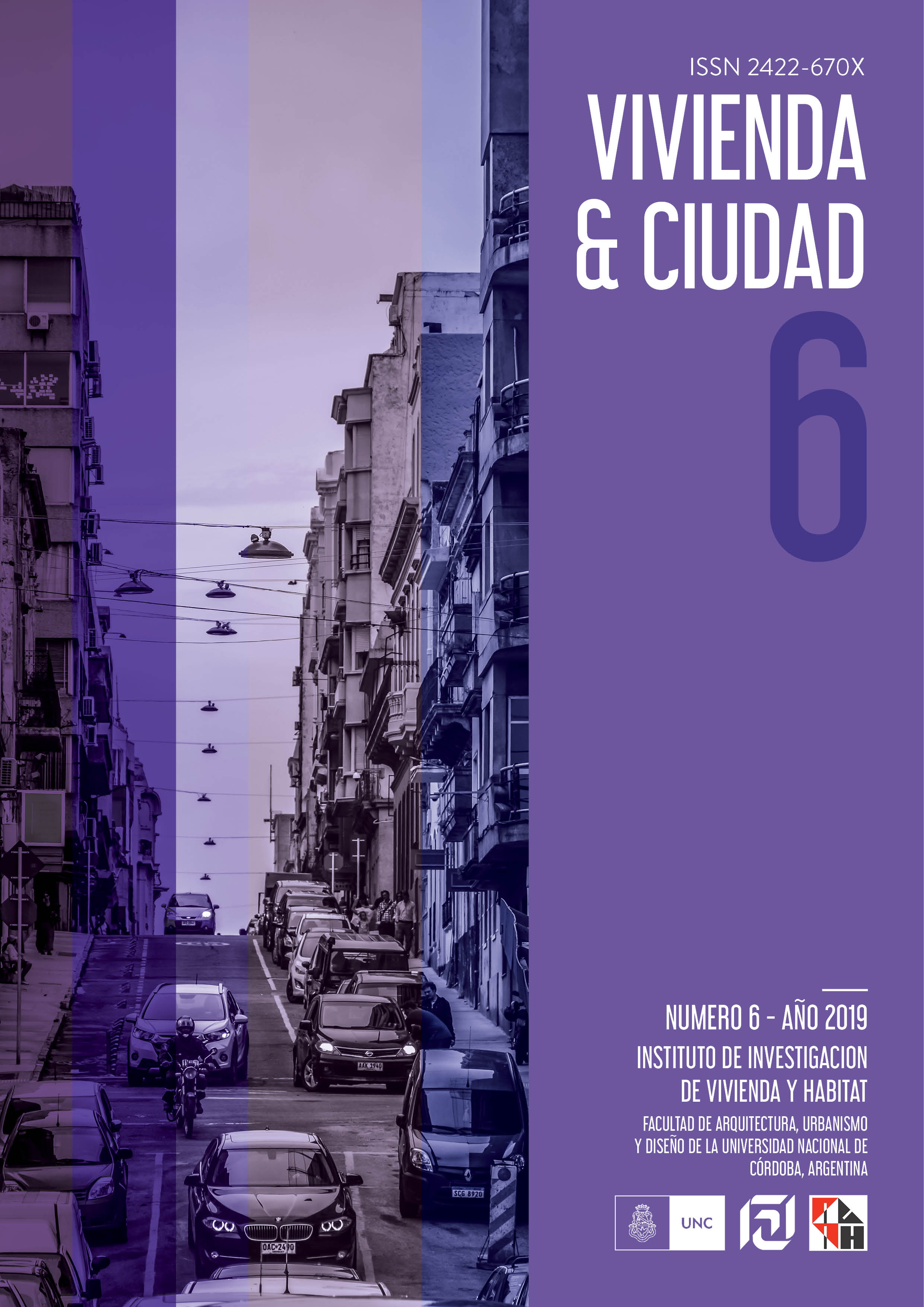Mass appraisal of urban land value using artificial intelligence. The case of San Francisco city, Córdoba, Argentina.
Keywords:
Land value, Mass appraisal, Machine Learning, Random Forest, Ordinary KrigingAbstract
The real estate market plays an important role in the economy and society, therefore, the downgrading of cadastral valuations, particularly urban land, has harmful effects on tax, territorial and housing public policies, property market, as in the stability of the finance system. For this reason, the cadastres face the challenge of developing massive valuations of a jurisdiction in order to provide updated and quality data, quickly and efficiently. Given the technological advance, the generation of large volumes of information and the progress associated with computer science, the ideas of massive appraisal of real estate by the catastres is increasingly taking hold. Under these needs and new situation, the results reflects the advantage of the predictive capacity in estimating the value of urban land by applying an algorithmic technique of machine learning, known as Random Forest, in combination with a geo-statistical technique called Ordinary Kriging for the treatment of error.
Downloads
References
Anselin, L. (1998). GIS research infrastructure for spatial analysis of real estate markets. Journal of Housing Research, 9, 113–133.
Antipov E.; Pokryshevskaya, E. (2012). Mass appraisal of residential apartments: An application of Random forest for valuation and a CART-based approach for model diagnostics. Expert System with Applications, 39, 1772-1778.
Bonet J, Muñoz, A. y Pineda, C, Mannheim (2014). El potencial oculto: factores determinantes y oportunidades del impuesto a la propiedad inmobiliaria en América Latina. Banco Interamericano de Desarrollo.
Breiman, L. (2001). Random forests. Machine Learning, 45(1) 5–32.
Breiman, L.; Friedman, J.; Stone, C.; Olshen, R. (1984). Classification and regression trees. California, Wadsworth, Inc.
Cervio, A. L. (2015). Expansión urbana y segregación socio-espacial en la ciudad de Córdoba (Argentina) durante los años ‘80. Astrolabio,14.
De Cesare, Claudia. (2012). Improving the Performance of the Property Tax in Latin America. Policy Focus Report. Lincoln Institute of Land Policy.
Hengl T.; Heuvelink G.; Kempen B.; Leenaars J.; Walsh M.; Shepherd K. (2015). Mapping Soil Properties of Africa at 250 m Resolution: Random Forests Significantly Improve Current Predictions. PLoS ONE, 10(6).
Huang, B.; Wu, B.; Barry, M. (2010). Geographically and temporally weighted regression for modeling spatio-temporal variation in house prices, International Journal of Geographical Information Science, 24(3) 383-401.
International Association of Assessing Officers (2003). Standard on automated valuation.
Jeremy, M. (2006). Mapping the Results of Geographically Weighted Regression.The Cartographic Journal. 43(2) 171-179
Jian, G.; Shi, D.; Zurada, J.; Levitan, A. (2014). Analyzing Massive Data Sets: An Adaptive Fuzzy Neural Approach for Prediction, with a Real Estate Illustration. Journal of Organizational Computing and Electronic Commerce, 24(1) 94-112.
Lockwood, T. y Rossini, P. (2011). Efficacy in Modelling Location Valuation models (AVMs). Within the Mass Appraisal Process. Pacific Rim Property Research Journal, 17(3) 418-442.
Morales Schechinger, C. (2007). Algunas reflexiones sobre el mercado de suelo urbano”. Mercados de suelo urbano en las ciudades latinoamericanas. Lincoln Institute of Land Policy (ed.).
Pérez-Planells,L.; Delegido, J.; et al. (2015). Análisis de métodos de validación cruzada para la obtención robusta de parámetros biofísicos. Revista de teledetección, 44. 55-65.
Piumetto, M. (2016). Diagnósticos catastros provinciales e impuesto inmobiliario, en Proyecto Modernización de los Sistemas de Gestión Financiera Pública Provincial, Argentina. BID, Ministerio del Interior, IERAL de Fundación Mediterránea (sin publicar).
Qingmin, M. (2014). Regression Kriging versus Geographically Weighted Regression for Spatial Interpolation. International Journal of Advanced Remote Sensing and GIS, 3(1) 606-615.
Reese, E. (2003). Instrumentos de gestión urbana, fortalecimiento del rol del municipio y desarrollo con equidad - Lincoln Institute of land policy (Ed.).
Sabatini, F. (2003). La segregación social del espacio en las ciudades de América Latina, BID: Desarrollo Social. Documento de Estrategia. Washington DC.
Serra, M. V., David E. Dowall, Diana Meirelles da Motta, and Michael Donovan. (2005). An examination of three Brazilian cities: Brasilia, Curitiba, and Recife. In Estudos estratéicos de apoio às politicas urbanas para os grupos de baixa renda no Brasil (Enabling strategy for moving upgrading to scale in Brazil). Urban land markets and urban land development. Washington, DC: Cities Alliance.
Tobler, W. (1970). A computer movie simulating urban growth in the Detroit region. Economic Geography, 46(2) 234-240.
Tobler, W. (1970). A computer movie simulating urban growth in the Detroit region. Economic Geography, volumen 46(2) 234-240.
Downloads
Published
How to Cite
Issue
Section
License
Authors who publish in this journal agree to the following terms:
a. Authors retain copyright and guarantee to the journal the right to be the first publication of the work as well as licensed under a Creative Commons Attribution-ShareAlike 4 license.
b. Authors may separately establish additional agreements for non-exclusive distribution of the version of the work published in the journal (e.g., placing it in an institutional repository or publishing it in a book), with an acknowledgement of its initial publication in this journal.
c. Authors are permitted and encouraged to disseminate their work electronically (e.g., in institutional repositories or on their own website) before and during the submission process, as this may result in productive exchanges, as well as earlier and greater citation of published work (See The Effect of Open Access).
d. 4.0 International Creative Commons Attribution-ShareAlike 4.0 License.










